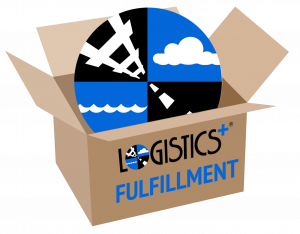 As the fulfillment industry expands, companies must recognize that there is no one-size-fits-all approach for order fulfillment. Although every client has different needs, the steps to begin business with a fulfillment provider are relatively the same. Not all steps are needed, but it is encouraged that you review as many things as you can before choosing what fulfillment provider to work with. Follow the steps below to establish an appropriate fulfillment service:
As the fulfillment industry expands, companies must recognize that there is no one-size-fits-all approach for order fulfillment. Although every client has different needs, the steps to begin business with a fulfillment provider are relatively the same. Not all steps are needed, but it is encouraged that you review as many things as you can before choosing what fulfillment provider to work with. Follow the steps below to establish an appropriate fulfillment service:
1. Assess Your Needs
Before you request a proposal, it’s best to understand exactly what your needs are. What do you hope to achieve by outsourcing your order fulfillment? Do you want a provider that is close to your location, close to your vendors, or close to your clients? Do you have a requirement of speed or accuracy? Do you need customer service? How hands on do you want to be? Do you need a company that can provide reporting capabilities? Will your shopping cart transmit data to a third party? All of these questions will form the basis of any fulfillment providers proposal.
2. Request A Proposal
We strongly suggest that you call several fulfillment providers to request a proposal. It’s important to hear the tone and inflection of the fulfillment companies representative as you lay out your needs and goals. The provider should ask questions such as: how many orders per month, number of items per order, number of SKU’s, amount of warehouse space needed, will there be returns, and several other factors that will impact the proposal. They should be able to make suggestions and discuss your needs in depth. They should also be able to provide a detailed proposal that outlines your specific needs. Once you receive the proposal, make sure to compare it to others that you have received.
3. Software Demo
It is always recommended that you request a walk through of the software that the fulfillment company will provide even if you don’t plan on using it. This software is your visibility into the warehouse and fulfillment process and it’s also a very good indicator of the sophistication level of the fulfillment provider. However, be careful not to be overly impressed with graphs and charts because the software should be a workhorse and not cosmetic in nature.
4. Request A Service Agreement
Prior to making a final decision, it is important to understand the terms and conditions of any contract or service agreement. Questions to ask: Is there a long term commitment? What are the payment terms? Is there a service guarantee and if so is it defined in specifics? What happens if I want to end service?
5. Have Technical Staff Speak
Your technical staff (or whomever is handling the system integration) should speak with the fulfillment companies technical staff to work out data transmission. The fulfillment provider should be able to supply API and integration documents. In addition, you should ask if there are other ways to transmit orders should your shopping cart have a data flow interruption. Methods such as manual entry or batch processing through spreadsheets should be presented as an option should an unforeseen technical problem happens on your side.
6. Sign The Service Agreement
Selecting your fulfillment service provider will require the execution of a service agreement or contract. The fulfillment provider should provide a counter signed agreement.
7. Complete The Integration & Send Inventory
The fulfillment partner should provide files that will need to be completed. This is an important time as setting up your fulfillment program requires a high level of detail. It is important to remember, the more information that you provide the better the program will be and the greater satisfaction you and your clients will have. You should expect to have a conference call with an Implementation Manager. This person is responsible for communicating your specific needs to the warehouse. You will also meet an Account Manager at this time. This will be your day to day contact.
8. Testing
Data transmission and order entry should be tested. You should receive a more detailed walk through of the software and a review of your objectives.
9. Go Live
The day has finally come where you are ready to go live. Inventory has been received and the warehouse is ready to begin fulfillment your orders. You now have a single point of contact.
In order to succeed at fulfillment, knowing the above steps can start you off in the right direction. For any questions or help with fulfillment or setting up fulfillment service, feel free to contact Logistics Plus today and we will be with you every step of the way. It’s important to work with a partner that understands your needs, so look no further than Logistics Plus. Contact us today.
